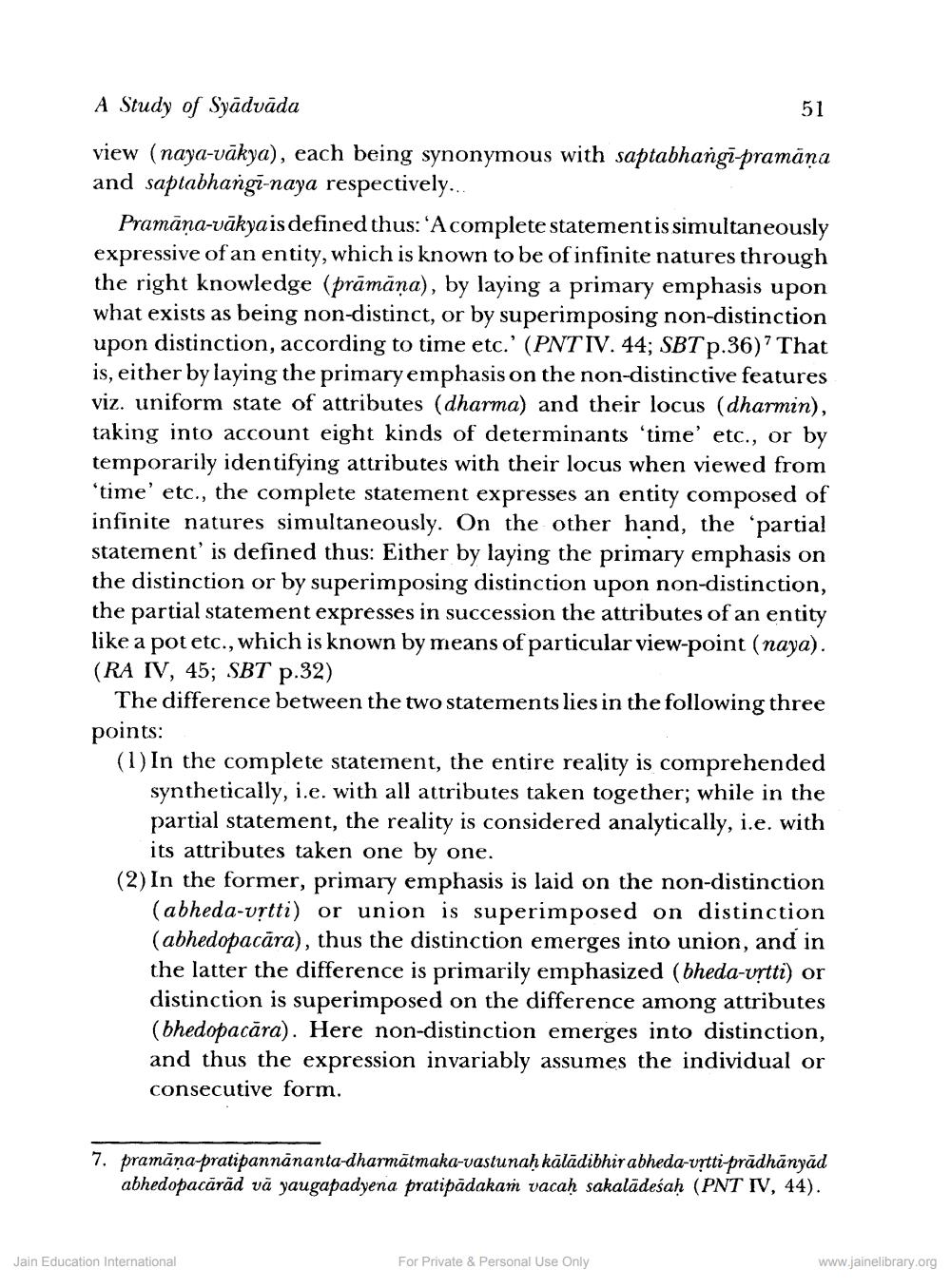________________
A Study of Syādvāda
51
view (naya-vākya), each being synonymous with saptabhangī-pramāņa and saptabhangi-naya respectively...
Pramāna-vākyais defined thus: 'Acomplete statement is simultaneously expressive of an entity, which is known to be of infinite natures through the right knowledge (prāmāņa), by laying a primary emphasis upon what exists as being non-distinct, or by superimposing non-distinction upon distinction, according to time etc.' (PNT IV. 44; SBT p.36)' That is, either by laying the primary emphasis on the non-distinctive features viz. uniform state of attributes (dharma) and their locus (dharmin) taking into account eight kinds of determinants 'time' etc., or by temporarily identifying attributes with their locus when viewed from *time' etc., the complete statement expresses an entity composed of infinite natures simultaneously. On the other hand, the statement' is defined thus: Either by laying the primary emphasis on the distinction or by superimposing distinction upon non-distinction, the partial statement expresses in succession the attributes of an entity like a pot etc., which is known by means of particular view-point (naya). (RA IV, 45; SBT p.32)
The difference between the two statements lies in the following three points: (1) In the complete statement, the entire reality is comprehended
synthetically, i.e. with all attributes taken together; while in the partial statement, the reality is considered analytically, i.e. with
its attributes taken one by one. (2) In the former, primary emphasis is laid on the non-distinction
(abheda-vịtti) or union is superimposed on distinction (abhedopacāra), thus the distinction emerges into union, and in the latter the difference is primarily emphasized (bheda-vịtti) or distinction is superimposed on the difference among attributes (bhedopacara). Here non-distinction emerges into distinction and thus the expression invariably assumes the individual or consecutive form.
7. pramāna-pratipannānanta-dharmātmaka-vastunah kālādibhir abheda-vytti-prādhānyad
abhedopacāräd vā yaugapadyena pratipadakam vacaḥ sakalādeśaḥ (PNT IV, 44).
Jain Education International
For Private & Personal Use Only
www.jainelibrary.org




